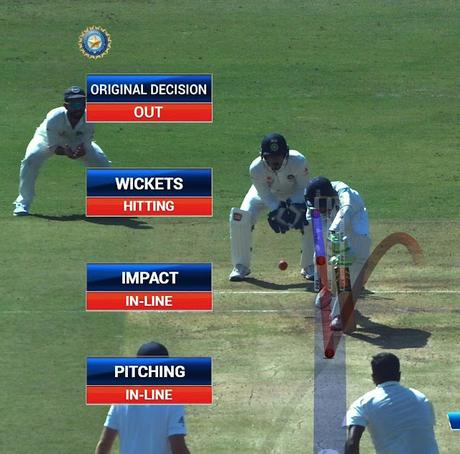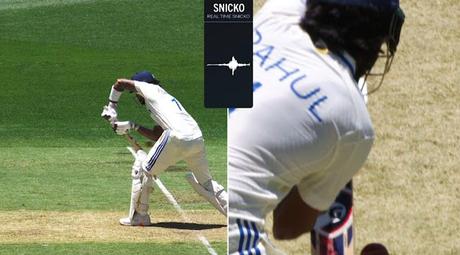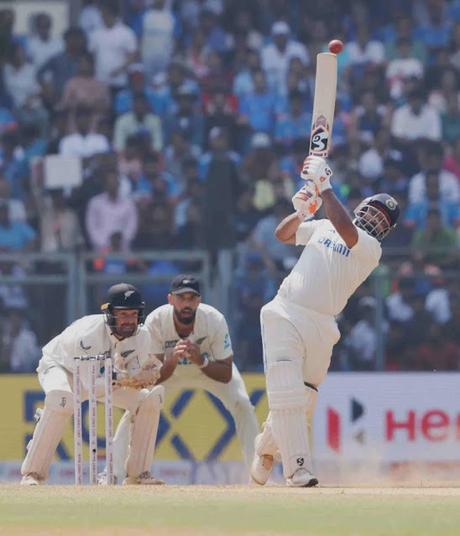In Nov 1992, India toured South Africa and the 1st Test was drawn – there were so many debutants. Ajay Jadeja, Pravin Amre (scored a century on debut!); Brian McMillan, Brett Schultz, legendary Jonty Rhodes, Omar Henry, Jimmy Cook and .. .. and Karl Liebenberg- who ?

Having watched Cricket at different decades, there have been Umpiring errors and biased decisions over the years and the introduction of Technology was thought to be a panacea for all the problems. Technology is good ! – there still remains some controversies cropping up hither and thither.
At Perth on day 1 - KL Rahul’s controversial dismissal sparked widespread debate, with critics questioning the third umpire’s decision.

The incident occurred in the 23rd over of India’s innings when Mitchell Starc bowled a delivery that angled across Rahul. Looking solid on 26 from 74 balls, Rahul got forward to defend. The ball passed close to the bat and was caught by wicketkeeper Alex Carey. The on-field umpire initially ruled it not out, but Australia went for a review. The review showed a spike on Snicko, which is interpreted as contact. However, the front-on replay, crucial for determining if the sound came from the bat or bat-pad contact, was inconclusive. Despite the ambiguity, the third umpire,Richard Illingworth, overturned the decision, citing the spike as sufficient evidence of an edge
At that point it was a very crucial one, yet India won the match by a huge margin is not the subject matter of the post – but technology of Snicko is.
Days earlier, India was humiliated 3-0 at home by Kiwis. New Zealanders naturally felt gleeful. New Zealand coming off the back of that series in Sri Lanka where they lost 2-0 would not have imagined handing out such a drubbing. In the Mumbai Test, when one thought India might hit back chasing improbable, was hit by that dismissal of Rishab Pant. An explosive Pant was given out caught bat-pad, with DRS overturning the on-field umpire's decision. Pant stood between New Zealand and a historic 3-0 series sweep with 64 off 57 balls, and before his dismissal India were 106 for 6, their target 41 runs away. New Zealand eventually won by 25 runs. In the 22nd over, Ajaz Patel twice went up in appeal against Pant. Once for a catch at slip. The on-field decision was not-out, and DRS upheld it. Two balls later, Ajaz spotted Pant charging out of his crease, pulled his length back, and forced the batter into a defensive prod. Pant tried to defend, the ball lobbed off him, into the keeper's gloves. Ajaz and the close-in fielders thought there had been an inside edge onto his front pad. Umpire Richard Illingworth didn't. New Zealand captain Tom Latham sent it upstairs for a review.

The ultraedge showed a spike when the ball seemingly passed the bat but the bat pad were so close that spike may have come from bat brushing the pad !! Pant looked completely unflustered until this point - he'd performed a double glove-touch with his batting partner Washington Sundar as soon as New Zealand went up to review; it was their last remaining review. Now he walked over to the on-field officials with his hand extended. Third umpire Paul Reiffel, in making his judgment, noted that the spike could have been from bat hitting pad. But then, after further replays and rocking-and-rolling of the moment where bat, pad and ball were close together, he changed his mind based on what he thought was a deflection at the moment the ball passed the bat.
New Zealand had reduced India to 29 for 5 on a rank turner and looked heavy favourites to win. But Pant managed to turn the tide for a while and Rohit felt his wicket had a huge impact on the game. "That dismissal actually was very, very crucial from our point of view. Rishabh was really looking good at that point”.
The technology available in India- Newzealand series was ‘Ultra Edge’ supposedly an advanced version of Snickometer. The technology, Snickometer, was first invented by British computer scientist Allan Plaskett in 1990 and it was used in 1999 by UK's Channel 4 prior to being used match between India and Australia. This technology graphically shows if the ball has touched the bat or not by using sound waves. Ultra Edge helps determine any contact between the bat and the ball using sound frequencies. The Snickometer is composed of a very sensitive microphone located in one of the stumps, connected to an oscilloscope that measures sound waves. Oscilloscope is nothing but a piece of equipment that shows changes in electrical current as waves in a line on a screen. When the ball nicks the bat, the oscilloscope trace will pick up the sounds. At the same time, a high-speed camera records the ball passing the bat. The oscilloscope trace is then shown alongside a slow-motion video of the ball passing the bat, and by the shape of the sound wave you can determine whether or not the noise picked up by the microphone coincides with the ball passing the bat, and whether the sound seems to come from the bat hitting the ball or from some other object. The real-time snicko meter automates the process of combining the visual and the audio in order to assist the final decision of confirming the edge of the bat. All the findings are live telecasted to the big screen and to the viewers at home to keep it transparent among the spectators.
That way Ultra Edge is combo technology using a series of highly sensitive microphones placed around the pitch that pick up sound waves and the visual feed.
Gary Stead was the NZ Coach for this series. A top-order batsman, Gary Stead played five Tests in 1999, averaging a decent 34.75 but after two mediocre performances against West Indies he was dropped. He later took to coaching, first working with the New Zealand Cricket High Performance Centre, before taking over the national women's team and in 2018 taking over from the highly successful Mike Hesson.
To the Q at the start on Karl Liebenberg. The third umpire (or TV Umpire) is an off-field umpire called upon to make final decision in questions referred to them by the two on-field umpires or the players. The concept of TV Umpire debuted in that Kingsmead Test. Karl Liebenberg was the third umpire, with Cyril Mitchley the on-field umpire, referring a run out decision in this match. Sachin Tendulkar became the first batsman to be dismissed (run out) by using television replays in the second day of the Test scoring 11.
Regards – S Sampathkumar
29.11.2024

